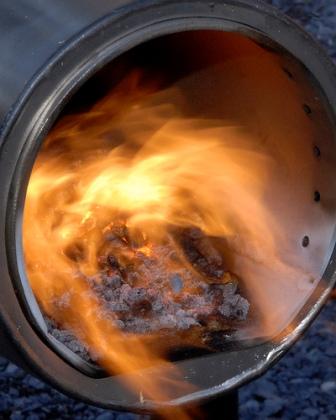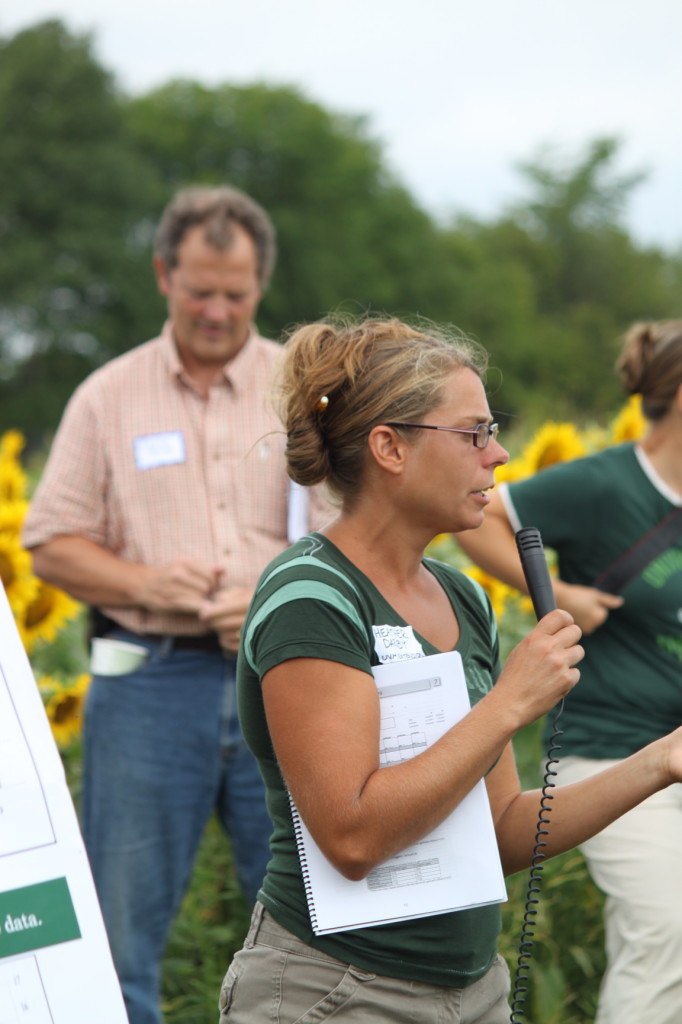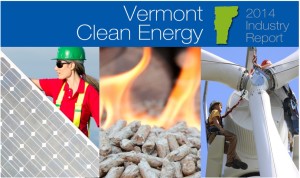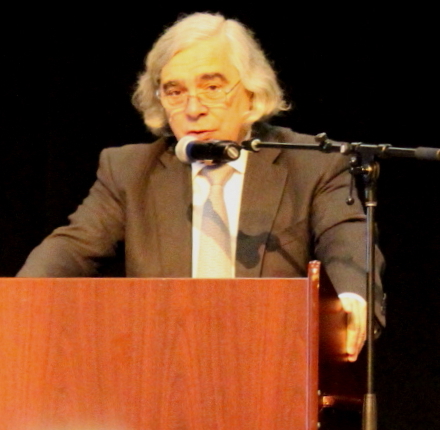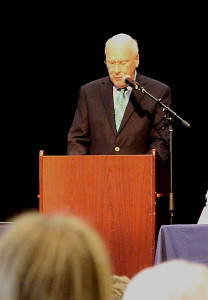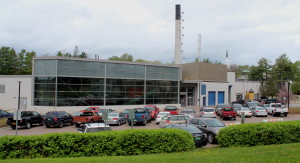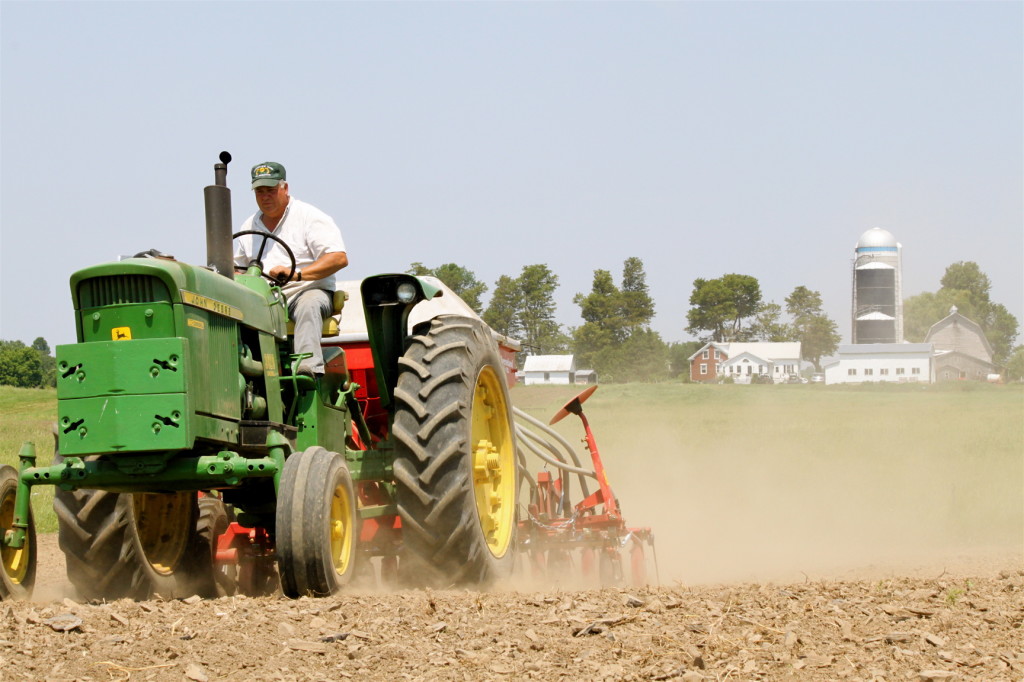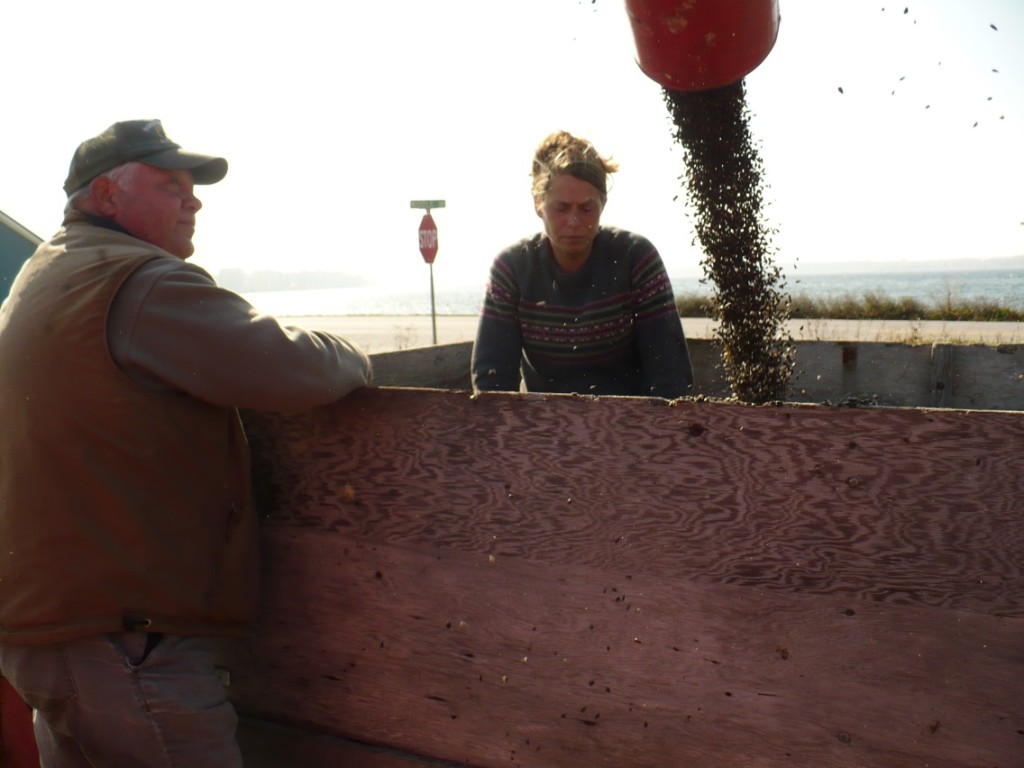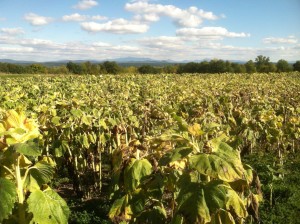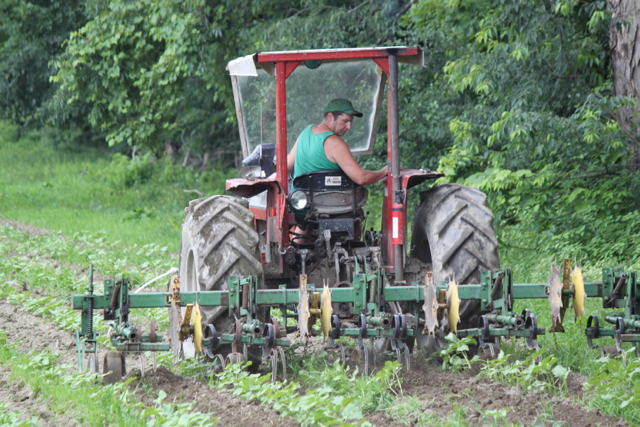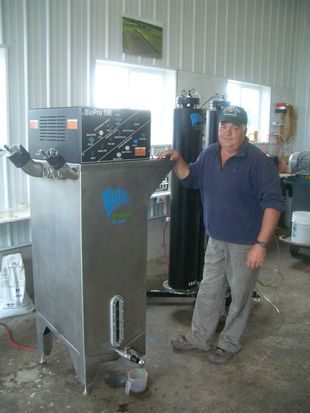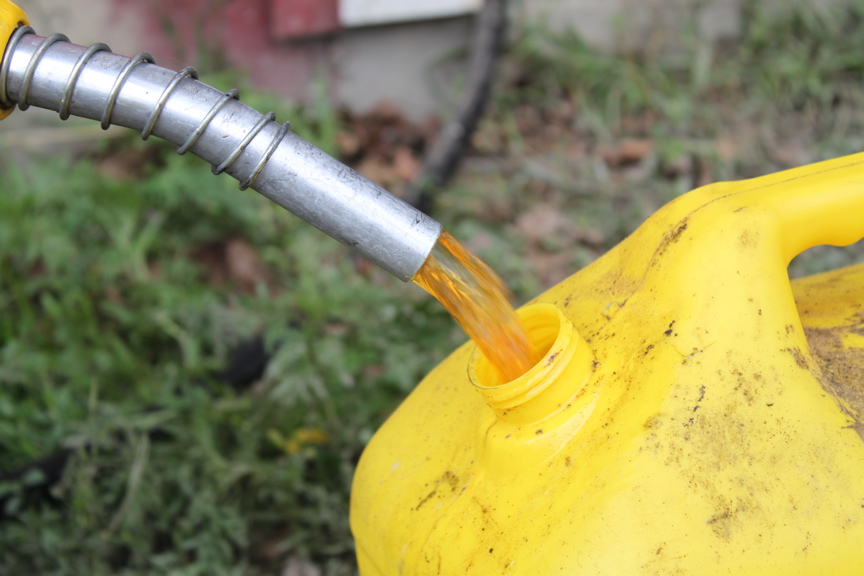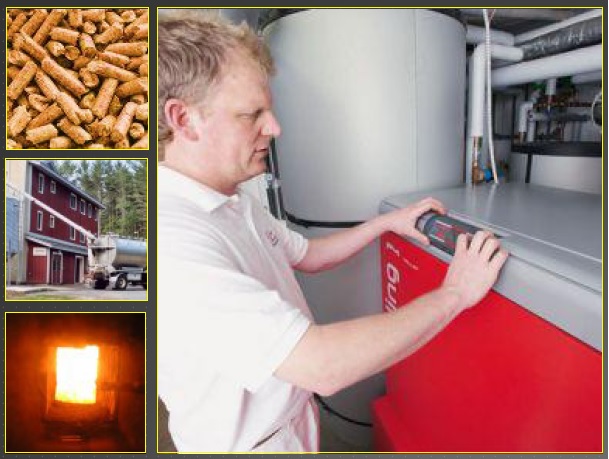12 Sep 2014
BTEC Webinar: Energy Farmers
Fall is harvest season in the nation’s agricultural communities, and energy is a crop of growing importance. Understanding the unique characteristics of agricultural residue and grass biomass supply chains is critical to the expansion of these non-woody fuels for conversion to useful heat and power. Join the Biomass Thermal Energy Council’s (BTEC) webinar on Wednesday, October 1st at 1PM ET as speakers Jay Van Roekel of Vermeer and Tom Wilson of Wilson Engineering Services discuss the ins-and-outs of agricultural and grass biomass fuels from the field to the boiler.
Topics to include:
• What types of agricultural residues and grass biomass are at commercial stage for conversion to useful heat and power?
• What are the harvest considerations of agricultural residues and grass biomass?
• How are agricultural residues and grass biomass processed and sized?
• How is this non-woody fuel stored, pre and post sizing?
• Case study: what would it take for dedicated grass energy crops to be a viable option for replacing fossil fuels in thermal applications in the U.S. Northeast?
• Q & A with the speakers
07 Aug 2014
National Bioenergy Day
Save the Date! October 22, 2014, is the second annual NBD Participant Flyer 2014. Spearheaded by the Biomass Power Association, the day is marked with events from across the country that celebrate the many benefits of local bioenergy.
National Bioenergy Day is an opportunity for Vermonters to showcase our research, progress, and impacts in producing local bioenergy for local use.
How To Get Involved:
- Organize an event on or near October 22nd that showcases bioenergy as a clean, efficient, and resourceful way to produce energy. Emphasizes bioenergy’s role in improving environmental health; and facilitates collaboration along the supply chain.
- Partner with someone who works in the bioenergy supply chain to create an event. Use the Vermont Energy Atlas to find partners in your area.
- Piggyback on an existing event and call it a NBD event.
- Share and talk about NBD in your social media and press efforts while promoting impacts in your community.
The Vermont Bioenergy Initiative, for example, will spend the day re-capping and previewing events on our Twitter handle that took place throughout the summer and that are planned for the fall. We’ll be recapping and sharing exciting things like the Biofuels Course at University of Vermont, Digester Operations Master Certificate at Vermont Technical College, annual University of Vermont Extension Crops and Soils Field Day at Borderview Research Farm, educational webinars, and several on-farm meetings and workshops.
If you are interested in planning a National Bioenergy Day to promote your work in Vermont, please contact Sarah Galbraith, program manager of the Vermont Bioenergy Initiative.
23 Jun 2014
Jobs and Clean Energy
Representatives of the clean energy industry celebrated today as the results of several studies and polls corroborated Vermont’s support for a clean energy future and leadership role in the clean energy industry. Governor Shumlin released the results of the first Vermont Clean Energy Industry Report. The report showed that more than 15,000 Vermonters work in the clean energy industry, which expects to see an additional 12% in growth over the next year.
“The statistics are very encouraging,” says Gabrielle Stebbins, Executive Director of Renewable Energy Vermont, the state trade association for renewable energy businesses. “Clean energy businesses are strong and growing. Meanwhile, two independent polls show that 86% of Vermonter’s support the state’s goal of getting 90% of its energy from renewable sources by 2050, while 90% believe that making this transition is necessary and important. From every corner of the state, Vermonters are sending a strong message to officials and elected leaders that they want a sustainable energy future. Our officials are responding, and the businesses are too.”
Solar electric, modern wood heating, efficiency leaders and others met at Blodgett’s Supply in the state capital to celebrate job growth, Vermonters saving energy and keeping dollars local. “It’s been clear to those in the market that Vermont’s clean energy sector is growing”, said Chair of the Renewable Energy Vermont Board, Tom Hughes of Sunward Solar. “The Vermont Clean Energy Industry Report, however, provides verifiable statistics to show that Vermont’s recent placement as #1 in solar jobs per capita, #2 in solar hot water systems installed, and the lead in farm methane systems is not just anecdotal – it’s real.”
The Report shows that, of the new employment opportunities in the last year, over 81% were new jobs, with the remainder representing new positions for existing employees. It also showed the merging of various business sectors – electricians entering the solar electric market and fuel oil dealers offering their customers more efficient heating systems such as air source heat pumps. “The Clean Energy Industry is not a fringe component of our economy,” Stebbins said. “As more Vermonters move towards an efficient and renewable energy future, more businesses are joining the sector as opportunities continue to grow.”
More Vermonters are moving towards a clean energy future, as the jobs results show. Similarly, two polls have been completed this June, showing Vermonters views towards clean energy. The Energy Action Network poll, released today, shows that Vermonters want clean energy, and they want it now: 74% of those polled agreed that transitioning away from traditional fuels needs to happen as quickly as possible. The Vermont Public Interest Research Group poll showed that support for a clean economy crossed party lines, with 93% of self-identified Democrats, 69% of Independents and 49% of Republicans saying they would view clean energy political candidates more favorably than others.
The Vermont Clean Energy Industry Report will be repeated over the next two years, with other ongoing polls continuing also.
19 May 2014
Sustainable Energy Summit
US Department of Energy Secretary Dr. Ernest Moniz visited Vermont last week to learn about our leadership in clean energy. While here, he met with the Vermont Congressional delegation and had several opportunities to meet with Vermont’s energy leaders.
On the evening of Thursday May 15, Ellen Kahler, Executive Director of Vermont Sustainable Jobs Fund (VSJF), joined 40 other invitees for a briefing with Dr. Moniz at Vermont Energy Investment Corporation (VEIC) in Burlington. The Vermont Bioenergy Initiative is a program of VSJF. The event was organized by Senator Bernie Sanders, who meets regularly with many of the invitees to discuss shifts in US energy policy, based on what has worked here in Vermont. During this briefing, Dr. Moniz heard about the many innovative initiatives underway to reduce non-renewable energy use and increase energy efficiency throughout the state. Examples of these initiatives include Green Mountain Power‘s investments in renewable energy projects, Washington Electric Cooperative’s 100% renewable portfolio, SunCommon‘s impressive residential solar energy installation program, Energy Action Network‘s efforts on making Montpelier the first net-zero state capital in the US, and the state’s commitment to achieve 90% renewable energy by 2050, to name just a few.
On Friday May 16, Dr. Moniz was one of eight panelists to speak at the Sustainable Energy Summit at Middlebury College. Senators Patrick Leahy and Bernie Sanders, Congressman Peter Welch, and Governor Peter Shumlin represented the Vermont delegation and comprised half of the panel. The second half were four Vermont energy leaders: Dr. Jack Byrne from Middlebury College, Mary Powell from Green Mountain Power, Scott Johnstone from VEIC, and Jamison Ervin from Waterbury LEAP, the Waterbury-Duxbury energy committee.
The Summit was open to the public and was attended by citizens, energy program leaders such as Vermont Bioenergy Initiative, and students. All panelists were invited to speak to the importance of clean energy to Vermont, and there was time for questions from the audience.
05 May 2014
Small-scale Oilseed Production in the Northeast
Country Folks is a weekly farm paper highlighting the many facets of agricultural life. The publication included an article on two recent webinars on the topic of oilseeds in the Northeast. The article features Roger Rainville, an Alburgh farmer who is growing oilseeds for biodiesel production on his farm, and Penn State and University of Vermont researchers who recently concluded an evaluation of small-scale oilseed presses. 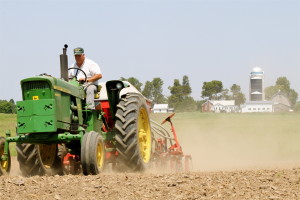
The article talks about growing and harvesting oilseeds, pressing, conversion to biodiesel, and by-product oilseed meal.
Click here to see the full article in Country Folks newspaper.
14 Apr 2014
Farm Fresh Fuel 2014
This guest post was contributed by Hannah Harwood and Dr. Heather Darby at UVM Extension Northwest Crops and Soils Program.
Travel Route 2 through Grand Isle County in early August this year and the rolling yellow fields along the roads will undoubtedly catch your eye. Sunflowers will be in bloom and, more than likely, tourists will be snapping photos. For the second year, growers throughout the county will be participating in a project that supports a small community of individuals who will be producing their own biofuels.
The Farm Fresh Fuel Project—created by UVM Extension’s Northwest Crops & Soils Program and the Vermont Bioenergy Initiative (VBI)—began in 2012 with about a dozen interested growers and 69 acres of sunflowers planted in the islands. Grand Isle County was chosen because it is a agriculturally-diverse community with some existing resources and experience in oilseed production. Participating growers, who signed up in each town in the county in 2012, ranged from seasoned dairy farmers to homesteaders trying their hand at crop production for the first time. All were grateful that the project was taking place in close proximity to technical assistance, equipment, and experienced growers.
That’s the whole idea of the Farm Fresh Fuel Project: developing a small community of individuals who can produce biofuels from the seed to the tank, in a place where the resources already exist to help along the way. Farm Fresh Fuel serves as a sort of small case study for alternative crops and small-scale biofuel production. If all Grand Isle County farmers integrated some amount of biodiesel into their operation, the county could be the first in the nation to have all of its agricultural producers using alternative energy.
Growers who want to participate in the project are responsible for providing the land, meeting fertility requirements, and arranging for planting, cultivation and harvest. In exchange, UVM Extension provides soil tests and interpretation, sunflower seed, technical crop production assistance, and in-season monitoring and insect scouting. After harvest, growers have the option of getting the seed processed at Borderview Farm in Alburgh, a facility with the on-site capacity to clean, dry, and press seed, as well as process raw oil into biodiesel.
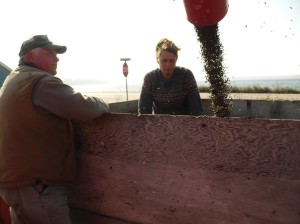
Farm operator Roger Rainville and UVM Extension agronomist Heather Darby watch the sunflower seed flow out of the combine on West Shore Road in Alburgh, 2012. Credit: Hannah Harwood.
In 2012, the average sunflower seed yield was approximately 1400 lbs per acre, though the success of individual fields ranged drastically from one to the next. The most problematic obstacles for Grand Isle producers were birds and weeds, both of which are concerns for almost every oilseed grower in the Northeast. Overall, 28.3 tons of seed were harvested from the county, and Roger and Natasha Rainville at Borderview Farm pressed 2,750 gallons of oil for participating growers, enough to make 2150 gallons of biofuel. When the oil was pressed, what was left was 15.9 tons of sunflower meal—which some participants used to feed livestock or fertilize their vegetables, and some sold to other farmers in the county. Overall, there was a buzz of excitement about these new value-added products—oil, meal, and/or fuel—being produced right in the county.
Though there was increasing interest and an abundance of good intention in 2013, weather conditions in May and June (namely 6.9” of rain above standard 30-year averages) prevented most anticipated fields from being planted on time or at all. The fields that were successfully seeded had decent yields, but the project in general was delayed for a year, giving growers, processors, and weathermen a chance to regroup.
UVM Extension and VBI are excited to facilitate this project again in 2014, with renewed interest from 2012 growers as well as interest from farmers and landowners new to Farm Fresh Fuel. After hosting an informational meeting on March 27 and gauging interest, UVM Extension estimates that at least eight growers will participate this year, putting approximately 60 acres into oilseed crop production for fuel, feed, and fertilizer that’s grown right in their backyard. If the weather cooperates, planters will start rolling through fields in May, and little green sunflower shoots will be visible from the road by June.
April 8, 2014, 1 p.m. Eastern Time
On-Farm Oilseed Pressing for Fuel and Food (link to webinar)
Chris Callahan, Extension Agricultural Engineer, University of Vermont
Douglas Schaufler, Research Associate, Ag Bio Engineering, Penn State
Wondering how oilseed crops like sunflower, soybeans and canola are used on-farm for liquid fuel replacement and feed production? This webinar describes small-scale extraction with examples of different oilseed press usage and and additional processing steps such as filtering and storage. Oil produced on-farm can then be used directly as straight vegetable oil fuel or changed into biodiesel for equipment use. Oilseed meal left following oil extraction is then used for animal feed and other uses. Some farms are diverting a portion of the oil produced into edible oils for consumer sales.
03 Apr 2014
Sustainable Farm Energy: 2014 Virtual Tours
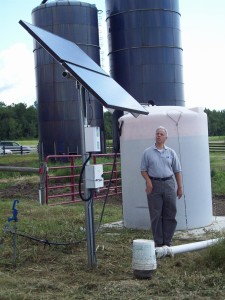 Are you looking to stabilize rising fuel and energy costs on your farm or homestead? Are you seeking more sustainable sources of energy? In this upcoming four-part webinar series, you’ll meet an organic vegetable farmer, grape grower & winemaker, sunflower & biodiesel producer, and pastured livestock farmer who will lead you through a virtual tour of their sustainable farm energy systems and ecological production techniques.
Are you looking to stabilize rising fuel and energy costs on your farm or homestead? Are you seeking more sustainable sources of energy? In this upcoming four-part webinar series, you’ll meet an organic vegetable farmer, grape grower & winemaker, sunflower & biodiesel producer, and pastured livestock farmer who will lead you through a virtual tour of their sustainable farm energy systems and ecological production techniques.
This lunchtime webinar series will run from noon-1:00pm every Friday from April 4th through April 25th. All of the webinars are free and open to the public. Registration is required. Upon registering, you’ll receive an email providing a link and instructions for you to access the series.
This webinar series is sponsored by NE SARE (Northeast Sustainable Ag Research and Education) and the Cornell Small Farms Program. Please send inquiries to smallfarmsprogram@cornell.edu. To learn about funding opportunities available from NE SARE, visit www.nesare.org. To learn more about small farm resources and support, visit www.smallfarms.cornell.edu.
April 4th: Organic Vegetable Farm Cools with the Earth: Warms with the Sun
Noon – 1:00pm with Jay Armour of Four Winds Farm, Gardiner, NY
Is it possible to operate a 24 acre diversified vegetable farm with minimal energy use? Yes! Jay Armour will take us on a virtual tour of his passive-solar heated and earth-cooled straw-bale vegetable barn with attached greenhouse. At one end of the barn are two root cellars built into a hillside that store root crops throughout the winter with minimal energy use. A 14-kw grid-intertied PV electric system is situated on the barn roof, which is being financed by a combination of a NYSERDA grant and a low-interest loan. A permanent raised bed system in the vegetable garden requires very little tractor time and hence very minimal fuel use. The Armours also transport vegetables to market in a diesel van converted to run on waste vegetable oil (WVO). The farm raises produce, heirloom seedlings, grass-fed beef, pasture raised turkeys, and intermittently pasture-raised pork. Register Here | Visit Farm Website
April 11th: Family Vineyard Shrinks Carbon Footprint by 40%
Noon – 1:00pm with Art Hunt of Hunt Country Vineyards, Branchport, NY
Since 2007, Hunt Country Vineyards has reduced total energy costs on their vineyard by 30% and their carbon footprint by more than 40%. How have they gone about it? Art Hunt will lead us on a virtual tour of their energy efficient winery, newly insulated warehouse, geothermal heating and cooling system, and vertical wind turbine. In 2012 the Hunts launched a Locavore Room which celebrates the bounty of local foods and beverages in the Finger Lakes. The Hunts are proud to say that all food & beverage items (other than wine) they offer for sale on the farm travel an average Distance-from-Source (DfS) of just 162 miles. Art will also share a variety of ecological production techniques. For example, in 2005, the Hunt family began mixing grape pomace with animal manure and then composting the mix before applying it to the vineyard. The compost adds vital minerals and nutrients to the soil that help produce outstanding grapes for winemaking and reduce the use of other fertilizers. Register Here | Visit Farm Website
April 18th: Sunflowers & Canola to Fuel: Dairy Becomes Biodiesel Production Facility
Noon – 1:00pm with Roger Rainville of Borderview Farm, Alburgh, Vermont
Interested in making biodiesel on your farm or in cooperation with other farmers? Roger Rainville will take us on a virtual tour of his former dairy-turned-energy farm in Alburgh, Vermont. In 2008, when diesel prices rose from $4 to $5 per gallon, Roger began planting sunflowers and canola on a portion of his 214 acres and installing biodiesel processing equipment. He harvests the oilseed with a combine, and uses a seed cleaner and grain dryer to prepare the seed for storage in a 60-ton grain bin prior to processing. He’ll show us how he presses the seed to get two products: oil for biodiesel and pelletized meal for feed or to burn in a pellet stove. He then sends the oil through a BioPro 190 automated biodiesel processor which can process 100 gallons of oil to fuel per day. Learn more about his equipment and the seed to fuel process by tuning in to this video. Cosponsored by the Vermont Bioenergy Initiative. Register Here | Visit the VBI Website
April 25th: Thirsty Livestock? Use Sun or Wind to Power a Remote Watering System
Noon – 1:00pm with Jonathan Barter of Barter Farm, Branchport NY
Are you getting tired of hauling water to livestock in remote pastures? Jonathan Barter will show us the renewable energy powered watering system on his 210 acre livestock farm (40 Angus cattle and 130 Cheviot and Dorset sheep). In 2010, Jonathan installed a combination wind and solar pumping system which supplies water to 58 acres of pasture. The pumping system consists of a 350 watt turbine, 400 watt solar panels, back up batteries and a deep well pump. Partial funding for this project was provided by USDA – Natural Resources Conservation Service’s Conservation Innovative Grants program. Register Here
21 Mar 2014
Local Production for Local Use: A Case Study
Prepared by Sarah Galbraith, Vermont Bioenergy Initiative Program Manager, VSJF
Highlights: Cost of biodiesel production = $2.29 per gallon ● Seed meal used as a co-product for livestock feed or crop fertilizer ● Central processing facility and shared equipment use maximizes efficiency for neighboring farms
Roger Rainville’s dairy-turned-energy farm in Grand Isle County is a place where area dairy farmers, organic growers, and landowners have made biodiesel from their own locally-grown sunflower seeds.
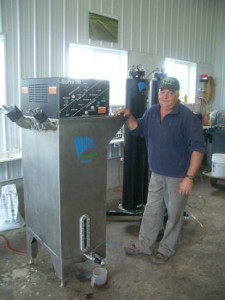
Roger Rainville with BioPro 190 automated biodiesel processor at Borderview Farm. Photo: Vermont Bioenergy Initiative
In 2008, when diesel prices rose from $4 to $5 per gallon, Rainville began experimenting with farm-scale biodiesel production. With guidance from University of Vermont (UVM) Extension and grant funding from Vermont Sustainable Jobs Fund’s Vermont Bioenergy Initiative, Rainville began planting sunflowers on a portion of his 214 acres and installing biodiesel processing equipment. Oilseed sunflowers (as opposed to confectionary sunflowers that are grown for eating) are the most popular oilseed crop in Vermont, with hundreds of acres planted statewide. The crop is grown in rotation with grains and grasses and yields high quantities of oil.
Harvesting, Cleaning, and Pressing
Following harvest with a combine, a seed cleaner and grain dryer are used to prepare the seeds for storage in a 200-ton grain bin prior to processing. A flex auger system moves the seeds from the storage bin into hoppers on each press, and screw augers push the seed through a narrow dye at the front of the press. Extracted oil oozes from the side of the barrel and is collected in settling tanks while pelletized meal is pushed through the dye at the front and is stored in one-ton agricultural sacks. The oil can then be used as culinary oil for cooking or further refined into biodiesel. The leftover seed meal is used for livestock feed, fuel for pellet stoves, or fertilizer for crops.
Biodiesel Processing
The small-scale biodiesel production facility at Borderview Farm is an 800 square foot insulated and heated building (the space does not need to be heated, but the oil should be stored where it will not freeze) that houses an oil press, a BioPro 190 automated biodiesel processor, a methanol recovery system, and a set of dry-wash columns for cleaning the fuel. The clean oil at the top of each settling tank is added to the BioPro 190 processor along with lye, methanol, and sulfuric acid. The automated processor runs through several stages of processing in about 48 hours (esterification, transesterification, settling, washing, and drying), with one break after 24 hours to remove the glycerin byproduct. Safety equipment in the processing facility includes personal protective equipment like aprons, gloves, eye protection, a ventilation system, gas detectors, and spill containment materials. At Borderview Farm a set of standard operating procedures hangs on the wall and blank check-sheets are in a binder to make the process easy to repeat. The finished biodiesel is stored in 250 gallon pallet tanks making distribution to different farms easier. The installed capacity of the facility can process 100 tons of seeds from 138 acres of sunflowers per year, yielding 10,500 gallons of biodiesel and 64 tons of sunflower meal (assuming the state average yield of 1,500 pounds sunflower seeds per acre and operation of 24 hours per day for 260 days per year).
Rainville switched from purchasing diesel for five tractors and one truck to making his own biodiesel. He wanted to be independent of imported fuel, and liked creating a new way for farmers to diversify. “Using land for making biodiesel is not the most economical option compared to some other crops, but it’s about creating opportunities to try something different,” says Rainville.
Sharing Infrastructure Through the Farm Fresh Fuel Project
In 2012 a group of ten farmers working in cooperation with Rainville and UVM Extension—called the Farm Fresh Fuel project—grew 90 acres of sunflowers for development of biodiesel. Cooperating farmers were required to plant, fertilize, weed, and harvest the sunflower crop. Farmers worked to share equipment to accomplish this task. The seed was brought to Rainville for conversion into biodiesel. Rainville did the harvesting for all farms, bringing about 56,721 pounds of seed to Borderview Farm.
Seeds from the ten growers yielded about 3,000 gallons of biodiesel and about 20 tons of meal for livestock feed. The biodiesel and meal were then redistributed to the growers based on the relative volume of sunflower seeds they contributed. One participating dairy farm, Sunset Lake Farms, is using the biodiesel to heat office space, the milking parlor, and water for cleaning and sanitizing equipment, and fed the meal to milking cows at a rate of 3 pounds per day, saving about $3,000 on fuel and feed costs.
Rainville’s annual biodiesel use has ranged from 500 to 3,000 gallons per year. At current prices (over $4 per gallon for diesel and $2.29 per produced gallon of biodiesel) biodiesel has saved him from $500 to $4,000 per year in fuel costs. He also emphasizes energy independence as an added benefit. Plus, any growers that also raise livestock can use the meal, which is leftover after the oil is extracted, as part of their feed rations. Rainville recommends talking with an animal nutritionist to blend this into feed at the right ratio, since sunflower meal has a high fat content.
When asked what advice Rainville would give others who want to make their own biodiesel, he says, “Ask questions, ask questions, ask questions. And ask them again!”
Learn more about energy efficiency and renewable energy in the Energy section of the Vermont Food System Atlas.
13 Mar 2014
Pellet Boiler Workshop Breaks Down the Basics
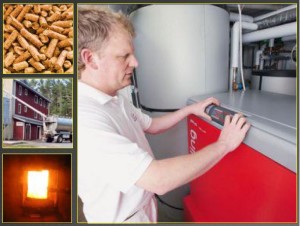 The Biomass Energy Resource Center at VEIC, in partnership with Renewable Energy Vermont, Housing Vermont, and the Vermont Fuel Efficiency Partnership are hitting the road in Vermont to share the basics of wood pellet boiler heating systems.
The Biomass Energy Resource Center at VEIC, in partnership with Renewable Energy Vermont, Housing Vermont, and the Vermont Fuel Efficiency Partnership are hitting the road in Vermont to share the basics of wood pellet boiler heating systems.
The BERC team and partners will continue their road show on Friday, March 14th, 2014 from 9am to noon at the Windsor Village Apartments in Windsor, VT. For more information, or to register, please email BERC.
Highlighted topics will include:
- An overview of biomass heat
- Perspectives from housing developers on biomass heating and its applications in multifamily buildings
- Opportunities to optimize the design process and select appropriate biomass systems
- An overview of pellet boiler systems
- Integrating pellet systems ,solar hot water, and fossil fuels
- An overview of the manufacture and distribution of wood pellets




